Capsule Review: 2015 Jeep Renegade
When the Jeep Renegade made its official debut at the 2014 Geneva Auto Show, I initially described it as “… a Panda 4×4 dressed up in Carhartt jeans and Red Wing boots.”
With a Fiat platform, powertrain and assembly plant, the Renegade isn’t the first CUV to come from the Fiat Chrysler braintrust – but represents the most ambitious attempt to create a global crossover suitable for all markets. And it’s also FCA’s best effort yet.
The Alfa Romeo – excuse, Compact U.S. Wide – platform underpinning the Jeep Cherokee ended up providing the mid-size Jeep with some sub-optimal packaging characteristics, namely inadequate rear seat space and a dearth of cargo room. While I happened to like the controversial styling, the Cherokee’s look polarized many observers. For the Renegade, Jeep has played it safe, with a slab-sided exterior that looks like a “ super-deformed” version of a Wrangler Unlimited.
Although the Renegade’s footprint is about the same size as a Nissan Juke or Kia Soul (which FCA had on hand as competitive vehicles), the Renegade is far heavier. While the Juke weighs in on either side of 3,000 lbs depending on spec, the Renegade starts at 3,300 lbs, and can approach 3,500 lbs at its heftiest. And you feel every additional pound behind the wheel.
In a vacuum, it’s not such a bad thing. The extra el-bees lend a substantial feel to the car, which makes it feel like a more solid vehicle than a B-segment crossover that shares a common ancestor with the less-than-stellar Fiat 500L. Half of the drive route consisted of winding, Northern California backroads, which we tackled in a fairly simple 1.4T equipped Latitude FWD model. While the 6-speed Renegade is no speed demon, it felt as lively and responsive as a Nissan Juke – which is a pretty fun vehicle in its own right. The long, EPA-optimized gearing of the 6-speed box means constant shifting between second and third to keep the buzzy little 1.4 motor on the boil, but it only adds to the fun of whipping the boxy little Jeep through switchbacks. The clutch is easy enough to modulate and the shifter is decidedly mid-pack in the “transverse shift quality” sweepstakes.
Driving the Renegade was such a hoot that I completely forgot to take pictures of the interior. The photo above, borrowed from Auto Express, shows what a well-equipped Renegade looks like on the inside. You will get a smaller version of UConnect, and Cherokee-like HVAC knobs and an electronic parking brake. Lower trim models get a more stripped down version of UConnect, with a less intricate display unit. Both of our demos had light fabric interiors which were quite handsome, especially when paired with the earth tone exterior colors. Avoid the black and heavier hues, lest you be mistaken for a Patriot owner.
The other half of the drive route was set up on an off-road course at California’s Hollister Hills State Vehicle Recreation Area. In addition to the 2.4L/9-speed Renegade, we also took out a Soul, a Juke, (both of which had been tested not long ago) and a Buick Encore. And holy hell does the Jeep feel like a porker. Despite handling the twisty roads with aplomb, the weight penalty over the competition (including the 3200 lb Encore) was immediately noticeable when getting out of the AWD 2.4L Renegade. Between the need for a diesel engine, a stout, Trail Rated 4×4 system, five-star crash test ratings on multiple continents and the appropriate “macho” looks, FCA engineers had to juggle numerous competing requirements that conceivably led to the Renegade weighing as much as 200 lbs more than a brand new Honda CR-V. Still it’s hard to wrap your head around such a porky figure for a B-segment CUV.
While Jeep laid out two different off-road courses for us to test the Renegade Trailhawk on, it’s difficult to evaluate its prowess, namely because I’m a city kid who thinks that a gravel driveway calls for switching into 4WD. With a five-mode selector switch and a first-gear low range (ala the Cherokee Trailhawk), the automatic only Trailhawk version of the Renegade easily handled the rocks and whoops on the Jeep designed course. A more qualified off-road driver is a better source of impartial information. On road, the 9-speed seems to have become a smoother, more civilized gearbox than the frenetic iterations found in other FCA vehicles.
Starting at $17,995 for a bare bones Sport (and we’re talking A/C as an option), the Renegade slots in between the $16,995 Patriot and the $18,995 Compass, which are vastly outdated, less visually appealing both inside and out, and likely unable to match the Renegade’s off-road abilities. But they represent a greater hurdle for the Renegade, even more so than the Juke, the Soul or any of the upcoming compact CUVs from Honda, Mazda and Chevrolet. Just as the qualitatively inferior Chrysler 200 and Dodge Avenger torpedoed sales of the Dart, it’s easy to imagine a scenario where heavy incentives and a dealer body eager to move the older CUVs could push prospective buyers into a Patriot or Compass – especially if they want an automatic vehicle but don’t want to pony up for the 2.4/9-Speed versions. Assuming the two older vehicles are phased out (or replaced by a single model), volumes in the USA should rise from our initial estimates of between 60,000-70,000 units. FCA didn’t mention a number during their briefings, but that’s our best guess.
In any case, North America is hardly the most important market for the Renegade. China, India, Brazil, Russia, Europe, Africa, the Middle East…these are the locales where the Renegade must really make it happen for Jeep. The B-Segment CUV is the hottest segment in the world market, and the combination of Fiat diesel engines, Jeep styling and brand image and a global manufacturing base will help the Renegade achieve FCA’s long desired push to turn Jeep into a global SUV brand – and a premium one at that. Don’t bet against it.
More by Derek Kreindler
Latest Car Reviews
Read moreLatest Product Reviews
Read moreRecent Comments
- Redapple2 I gave up on Honda. My 09 Accord Vs my 03. The 09s- V 6 had a slight shudder when deactivating cylinders. And the 09 did not have the 03 's electro luminescent gages. And the 09 had the most uncomfortable seats. My brother bought his 3rd and last Honda CRV. Brutal seats after 25 minutes. NOW, We are forever Toyota, Lexus, Subaru people now despite HAVING ACCESS TO gm EMPLOYEE DISCOUNT. Despite having access to the gm employee discount. Man, that is a massive statement. Wow that s bad - Under no circumstances will I have that govna crap.
- Redapple2 Front tag obscured. Rear tag - clear and sharp. Huh?
- Redapple2 I can state what NOT to buy. HK. High theft. Insurance. Unrefined NVH. Rapidly degrading interiors. HK? No way !
- Luke42 Serious answer:Now that I DD an EV, buying an EV to replace my wife’s Honda Civic is in the queue. My wife likes her Honda, she likes Apple CarPlay, and she can’t stand Elon Musk - so Tesla starts the competition with two demerit-points and Honda starts the competition with one merit-point.The Honda Prologue looked like a great candidate until Honda announced that the partnership with GM was a one-off thing and that their future EVs would be designed in-house.Now I’m more inclined toward the Blazer EV, the vehicle on which the Prologue is based. The Blazer EV and the Ultium platform won’t be orphaned by GM any time soon. But then I have to convince my wife she would like it better than her Honda Civic, and that’s a heavy lift because she doesn’t have any reason to be dissatisfied with her current car (I take care of all of the ICE-hassles for her).Since my wife’s Honda Civic is holding up well, since she likes the car, and since I take care of most of the drawbacks of drawbacks of ICE ownership for her, there’s no urgency to replace this vehicle.Honestly, if a paid-off Honda Civic is my wife’s automotive hill to die on, that’s a pretty good place to be - even though I personally have to continue dealing the hassles and expenses of ICE ownership on her behalf.My plan is simply to wait-and-see what Honda does next. Maybe they’ll introduce the perfect EV for her one day, and I’ll just go buy it.
- 2ACL I have a soft spot for high-performance, shark-nosed Lancers (I considered the less-potent Ralliart during the period in which I eventually selected my first TL SH-AWD), but it's can be challenging to find a specimen that doesn't exhibit signs of abuse, and while most of the components are sufficiently universal in their function to service without manufacturer support, the SST isn't one of them. The shops that specialize in it are familiar with the failure as described by the seller and thus might be able to fix this one at a substantial savings to replacement. There's only a handful of them in the nation, however. A salvaged unit is another option, but the usual risks are magnified by similar logistical challenges to trying to save the original.I hope this is a case of the seller overvaluing the Evo market rather than still owing or having put the mods on credit. Because the best offer won't be anywhere near the current listing.





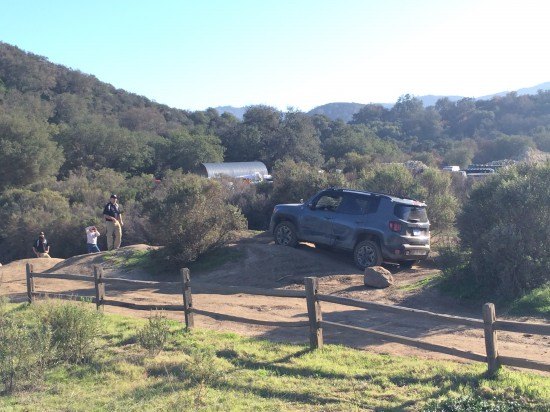




















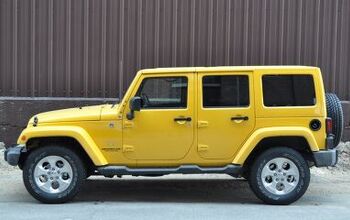

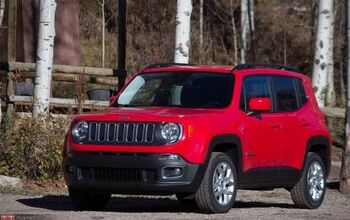
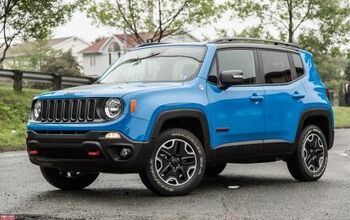
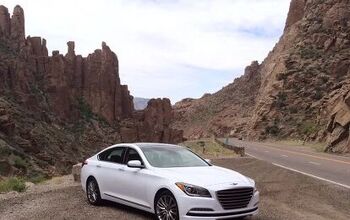










Comments
Join the conversation
18k is alot for what im sure is a bare bones stripper model. Good luck finding them for that though.
I really like this thing, at least from the specs and what I read. It looks like they got a lot right: Available manual transmission, even on higher level trims 4wd/awd Removable roofs - very cool Fold flat passenger seat for cargo carrying - or if you're like me and sometimes like to camp in your vehicle, extra legroom A really nice color palette, not just grey, gray, silver, black, white, and a form of red And it looks good If it's as good in person, and drives as well, I'll buy one. I can't wait to check it out.